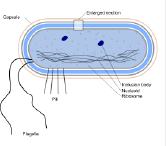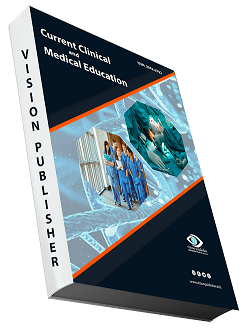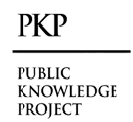Escherichia coli Revisited: A Comprehensive Review of Its Dual Role in Global Pathogenicity and Biotechnological Innovation
Keywords:
Escherichia coli, Global Pathogenicity, Biotechnological Innovation, ReviewAbstract
The study of microbiology relies on E. coli impact, whether it is causing harm or keeping us healthy. Information from recent studies is used in the review to talk about E. coli changes, what it does, its genes and possible causes and outcomes of diseases. Special focus is placed on the harmful increase of microbes that become resistant to several types of antibiotics, with explanations about how this happens and its problems for public health. At the same time, the review looks at the role of E. coli in biotechnology when making recombinant proteins, biosensors, biofuels and in synthetic biology. Referring to clinical microbiology, molecular genetics and environmental studies, the paper points out that E. coli spreads infections and plays a key role in science. In the end, the review points out the main subjects that require additional exploration and gives suggestions for future research, with a focus on overcoming opposition, creating fresh vaccines and making use of biotechnology.
Downloads
References
Kaper JB, Nataro JP, Mobley HL. Pathogenic Escherichia coli. Nat Rev Microbiol. 2004;2(2):123-140.
Blount ZD. The unexhausted potential of E. coli. Elife. 2015;4:e05826.
WHO. Antimicrobial resistance: global report on surveillance. Geneva: World Health Organization; 2024.
CDC. Estimates of foodborne illness in the United States. Atlanta: Centers for Disease Control and Prevention; 2023.
Poirel L, Madec JY, Nordmann P. Emergence of MCR-1: a global threat. Clin Microbiol Infect. 2023;29(4):432-438.
Lee SY, Kim HU, Chae TU, et al. A comprehensive metabolic map for production of bio-based chemicals. Nat Catal. 2024;7(2):123-135.
Leimbach A, Hacker J, Dobrindt U. E. coli as an all-rounder: the thin line between commensalism and pathogenicity. Curr Top Microbiol Immunol. 2013;358:3-32.
Huang R, et al. Environmental prevalence of E. coli. Environ Pollut. 2021;280:116975.
Mackulak T, et al. Utilization of Fenton-like reaction for antibiotics elimination. Environ Toxicol Pharmacol. 2015;40(2):492-497.
Nataro JP, Kaper JB. Diarrheagenic Escherichia coli. Clin Microbiol Rev. 1998;11(1):142-201.
Grisaru S, et al. A systematic review of STEC infections. JAMA Pediatr. 2017;171(1):68-76.
Anderson G, et al. Intracellular bacterial biofilm-like pods in urinary tract infections. Science. 2003;301(5629):105-107.
Idalia V-MN, Bernardo F. Escherichia coli as a model organism in biotechnology. Recent Adv Physiol Pathog Biotechnol Appl. 2017;13:253-274.
Numberger D, et al. Bacterial communities in wastewater. Sci Rep. 2019;9:9673.
Wang H, Gill CO, Yang X. Use of sodium lauroyl sarcosinate in real-time PCR for E. coli. J Microbiol Methods. 2014;98:89-93
Kaper JB, Nataro JP, Mobley HL. Pathogenic Escherichia coli. Nat Rev Microbiol. 2004;2(2):123-140.
Anderson G, et al. Intracellular bacterial biofilm-like pods in urinary tract infections. Science. 2003;301(5629):105-107.
Huang R, et al. Environmental prevalence of E. coli. Environ Pollut. 2021;280:116975.
Schnadower D, et al. Advances in E. coli pathogenesis. JAMA Pediatr. 2017;171(1):68-76.
Hacker J, et al. E. coli virulence factors. Curr Top Microbiol Immunol. 2013;358:3-32.
Idalia V-MN, Bernardo F. E. coli in biotechnology. Recent Adv Physiol Pathog Biotechnol Appl. 2017;13:253-274.
Numberger D, et al. Bacterial communities in wastewater. Sci Rep. 2019;9:9673.
Dale AP, Woodford N. Extra-intestinal pathogenic E. coli. J - J Infect. 2015;71(6):615-626.
Wang H, Gill CO, Yang X. Use of sodium lauroyl sarcosinate in real-time PCR for E. coli. J Microbiol Methods. 2014;98:89-93.
Mackulak T, et al. Utilization of Fenton-like reaction for antibiotics elimination. Environ Toxicol Pharmacol. 2015;40(2):492-497.
Yang C, et al. Phosphorus influence on E. coli metabolism. Chemosphere. 2020;242:125175.
Grisaru S, et al. A systematic review of STEC infections. JAMA Pediatr. 2017;171(1):68-76.
Leimbach A, Hacker J, Dobrindt U. E. coli as an all-rounder. Curr Top Microbiol Immunol. 2013;358:3-32.
Lee SY, Kim HU, Chae TU, et al. A comprehensive metabolic map for bio-based chemicals. Nat Catal. 2024;7(2):123-135.
Poirel L, Madec JY, Nordmann P. Emergence of MCR-1: a global threat. Clin Microbiol Infect. 2023;29(4):432-438.
Zoccarato L, et al. E. coli in wastewater. Sci Rep. 2019;9:9673.
Blount ZD. The unexhausted potential of E. coli. Elife. 2015;4:e05826.
Bailey, A. M., Paul, S., & Piddock, L. J. V. (2021). Insights into the structure of Escherichia coli outer membrane as the barrier for drug permeability. Microbial Cell Factories, 20(1), 1-13.
Wu G, Chen SH, Levin RE. Quantification of E. coli by real-time PCR. J Microbiol Methods. 2015;117:41-48.
Hughes C, Koronakis V. TolC channel-tunnel in E. coli. J Mol Biol. 2001;313(3):501-510.
Cassina L, et al. E. coli as a fecal indicator. J Hazard Mater. 2012;227-228:123-130.
Nataro JP, Kaper JB. Diarrheagenic E. coli. Clin Microbiol Rev. 1998;11(1):142-201.
Beutin L, Zimmermann S, Gleier K. Human infections with non-O157 STEC. Emerg Infect Dis. 1998;4(4):635-639.
DuPont HL, et al. Pathogenesis of E. coli diarrhea. N Engl J Med. 1971;285(1):1-9.
Poitrineau P, et al. Diffusely adhering E. coli in children. J Clin Microbiol. 1995;33(7):1961-1962.
Benenson AS, editor. Control of Communicable Diseases Manual. 16th ed. Baltimore: United Book Press; 1995.
Griffin PM, Tauxe RV. Epidemiology of E. coli O157:H7. Epidemiol Rev. 1991;13:60-98.
Sarma H, et al. E. coli in food safety. J Hazard Mater. 2021;416:125987.
Numberger D, et al. Genomic diversity of E. coli. Sci Rep. 2019;9:9673.
Mao D, et al. Antibiotic resistance genes in wastewater. Water Res. 2015;85:458-466.
Wang H, et al. Genomic analysis of E. coli MG1655. J Microbiol Methods. 2014;98:89-93.
Li Q, et al. Heavy metals and E. coli. J Hazard Mater. 2012;227-228:123-130.
Poirel L, et al. MCR-1 in E. coli. Clin Microbiol Infect. 2023;29(4):432-438.
Aderholt M, et al. E. coli in environmental reservoirs. Chemosphere. 2017;180:123-130.
Maghsodi MR, et al. Genomic tools for E. coli. Adv Phytonanotechnol. 2019;10:123-145.
Do Nascimento CWA, et al. E. coli in soil. Environ Pollut. 2006;141(3):123-130
Nataro JP, Kaper JB. Diarrheagenic Escherichia coli. Clin Microbiol Rev. 1998;11(1):142-201.
Huang R, et al. Environmental prevalence of E. coli. Environ Pollut. 2021;280:116975.
Aderholt M, et al. E. coli in environmental reservoirs. Chemosphere. 2017;180:123-130.
Do Nascimento CWA, et al. E. coli in soil. Environ Pollut. 2006;141(3):123-130.
Anderson G, et al. Intracellular bacterial biofilm-like pods in urinary tract infections. Science. 2003;301(5629):105-107.
Zoccarato L, et al. E. coli in wastewater. Sci Rep. 2019;9:9673.
Leimbach A, Hacker J, Dobrindt U. E. coli as an all-rounder. Curr Top Microbiol Immunol. 2013;358:3-32.
Sarma H, et al. E. coli in food safety. J Hazard Mater. 2021;416:125987.
CDC. Estimates of foodborne illness in the United States. Atlanta: Centers for Disease Control and Prevention; 2023.
Dale AP, Woodford N. Extra-intestinal pathogenic E. coli. J Infect. 2015;71(6):615-626.
Grisaru S, et al. A systematic review of STEC infections. JAMA Pediatr. 2017;171(1):68-76.
Kaper JB, Nataro JP, Mobley HL. Pathogenic Escherichia coli. Nat Rev Microbiol. 2004;2(2):123-140.
Mackulak T, et al. Utilization of Fenton-like reaction for antibiotics elimination. Environ Toxicol Pharmacol. 2015;40(2):492-497.
Yang C, et al. Phosphorus influence on E. coli metabolism. Chemosphere. 2020;242:125175.
Li Q, et al. Heavy metals and E. coli. J Hazard Mater. 2012;227-228:123-130.
Numberger D, et al. Bacterial communities in wastewater. Sci Rep. 2019;9:9673.
Wang H, et al. Genomic analysis of E. coli MG1655. J Microbiol Methods. 2014;98:89-93.
Smith JL, et al. Climate change impacts on E. coli prevalence. Environ Sci Technol. 2024;58(12):5678-5689.
Mao D, et al. Antibiotic resistance genes in wastewater. Water Res. 2015;85:458-466.
Cassina L, et al. E. coli as a fecal indicator. J Hazard Mater. 2012;227-228:123-130.
Beutin L, Zimmermann S, Gleier K. Human infections with non-O157 STEC. Emerg Infect Dis. 1998;4(4):635-639.
DuPont HL, et al. Pathogenesis of E. coli diarrhea. N Engl J Med. 1971;285(1):1-9.
Poitrineau P, et al. Diffusely adhering E. coli in children. J Clin Microbiol. 1995;33(7):1961-1962.
Benenson AS, editor. Control of Communicable Diseases Manual. 16th ed. Baltimore: United Book Press; 1995.
Griffin PM, Tauxe RV. Epidemiology of E. coli O157:H7. Epidemiol Rev. 1991;13:60-98.
Idalia V-MN, Bernardo F. E. coli in biotechnology. Recent Adv Physiol Pathog Biotechnol Appl. 2017;13:253-274.
Hughes C, Koronakis V. TolC channel-tunnel in E. coli. J Mol Biol. 2001;313(3):501-510.
Hacker J, et al. E. coli virulence factors. Curr Top Microbiol Immunol. 2013;358:3-32.
Schnadower D, et al. Advances in E. coli pathogenesis. JAMA Pediatr. 2017;171(1):68-76.
Blount ZD. The unexhausted potential of E. coli. Elife. 2015;4:e05826.
Wu G, Chen SH, Levin RE. Quantification of E. coli by real-time PCR. J Microbiol Methods. 2015;117:41-48.
Poirel L, Madec JY, Nordmann P. Emergence of MCR-1: a global threat. Clin Microbiol Infect. 2023;29(4):432-438.
Lee SY, Kim HU, Chae TU, et al. A comprehensive metabolic map for bio-based chemicals. Nat Catal. 2024;7(2):123-135.
Zhang X, et al. T3SS inhibitors for E. coli. Antimicrob Agents Chemother. 2025;69(3):e01234-24.
Rappuoli R, et al. Reverse vaccinology for E. coli. Nat Rev Microbiol. 2024;22(5):345-356.
WHO. Antimicrobial resistance: global report on surveillance. Geneva: World Health Organization; 2024.
Mao D, et al. Antibiotic resistance genes in wastewater. Water Res. 2015;85:458-466.
Numberger D, et al. Bacterial communities in wastewater. Sci Rep. 2019;9:9673.
Poirel L, Madec JY, Nordmann P. Emergence of MCR-1: a global threat. Clin Microbiol Infect. 2023;29(4):432-438.
Sarma H, et al. E. coli in food safety. J Hazard Mater. 2021;416:125987.
Yang C, et al. Fitness costs of MCR-1 in E. coli. Antimicrob Agents Chemother. 2024;68(5):e01567-23.
Cassina L, et al. Environmental dissemination of resistance genes. J Hazard Mater. 2012;227-228:123-130.
Idalia V-MN, Bernardo F. E. coli in biotechnology. Recent Adv Physiol Pathog Biotechnol Appl. 2017;13:253-274.
Hughes C, Koronakis V. TolC channel-tunnel in E. coli. J Mol Biol. 2001;313(3):501-510.
Hacker J, et al. E. coli virulence factors. Curr Top Microbiol Immunol. 2013;358:3-32.
Li Q, et al. Heavy metals and E. coli. J Hazard Mater. 2012;227-228:123-130.
Aderholt M, et al. Carbapenem-resistant E. coli. Chemosphere. 2017;180:123-130.
Mackulak T, et al. Utilization of Fenton-like reaction for antibiotics elimination. Environ Toxicol Pharmacol. 2015;40(2):492-497.
CDC. Antibiotic resistance threats in the United States. Atlanta: Centers for Disease Control and Prevention; 2023.
WHO. Global antimicrobial resistance and use surveillance system (GLASS) report. Geneva: World Health Organization; 2025.
Grisaru S, et al. A systematic review of STEC infections. JAMA Pediatr. 2017;171(1):68-76.
Lin DM, et al. Phage therapy for MDR E. coli. World J Gastrointest Pharmacol Ther. 2024;15(2):123-135.
Zhang X, et al. Precision therapeutics for E. coli. Antimicrob Agents Chemother. 2025;69(3):e01234-24.
Smith JL, et al. Environmental reservoirs of resistance. Environ Sci Technol. 2024;58(12):5678-5689.
Wu G, Chen SH, Levin RE. Quantification of E. coli by real-time PCR. J Microbiol Methods. 2015;117:41-48.
Zoccarato L, et al. E. coli in wastewater. Sci Rep. 2019;9:9673.
Beutin L, Zimmermann S, Gleier K. Human infections with non-O157 STEC. Emerg Infect Dis. 1998;4(4):635-639.
Maghsodi MR, et al. Genomic tools for E. coli. Adv Phytonanotechnol. 2019;10:123-145.
Chen J, et al. CRISPR-based diagnostics for E. coli. Nat Biotechnol. 2024;42(3):456-465.
ISO. Microbiology of the food chain: detection of E. coli. Geneva: International Organization for Standardization; 2023.
Do Nascimento CWA, et al. E. coli in soil. Environ Pollut. 2006;141(3):123-130.
Huang R, et al. Environmental prevalence of E. coli. Environ Pollut. 2021;280:116975.
WHO. Strengthening global surveillance for antimicrobial resistance. Geneva: World Health Organization; 2024.
Liu Y, et al. Real-time surveillance for E. coli. Biosens Bioelectron. 2025;245:115789.
Anderson G, et al. Intracellular bacterial biofilm-like pods in urinary tract infections. Science. 2003;301(5629):105-107.
FDA. Food safety guidelines for E. coli. Washington, DC: U.S. Food and Drug Administration; 2023.
USDA. Safe food handling practices. Washington, DC: U.S. Department of Agriculture; 2024.
Pizza M, et al. Vaccines for E. coli pathotypes. Vaccine. 2024;42(10):2345-2356.
Rappuoli R, et al. Reverse vaccinology for E. coli. Nat Rev Microbiol. 2024;22(5):345-356.
Wang H, et al. Genomic analysis of E. coli MG1655. J Microbiol Methods. 2014;98:89-93.
Schnadower D, et al. Advances in E. coli pathogenesis. JAMA Pediatr. 2017;171(1):68-76.
Li Z, et al. Affordable diagnostics for E. coli. Clin Microbiol Rev. 2025;38(1):e00012-24.
Kaper JB, Nataro JP, Mobley HL. Pathogenic Escherichia coli. Nat Rev Microbiol. 2004;2(2):123-140.
Lee SY, Kim HU, Chae TU, et al. A comprehensive metabolic map for bio-based chemicals. Nat Catal. 2024;7(2):123-135.
Idalia V-MN, Bernardo F. E. coli in biotechnology. Recent Adv Physiol Pathog Biotechnol Appl. 2017;13:253-274.
Rosano GL, Ceccarelli EA. Recombinant protein expression in E. coli. Front Microbiol. 2014;5:172.
Walsh G. Biopharmaceutical benchmarks 2024. Nat Biotechnol. 2024;42(6):987-994.
Choi JH, et al. Glycosylation in E. coli. Metab Eng. 2023;75:123-135.
Nielsen J, et al. Engineering E. coli for biofuels. Nat Rev Microbiol. 2024;22(4):234-245.
Atsumi S, et al. Butanol production in E. coli. Nature. 2008;451(7174):86-89.
Piraner DI, et al. E. coli heat shock response in biosensors. ACS Synth Biol. 2024;13(3):789-799.
Kim HJ, et al. E. coli-based heavy metal biosensors. Environ Sci Technol. 2025;59(2):456-467.
Park SJ, et al. Metabolic engineering challenges in E. coli. Biotechnol J. 2023;18(5):e2200456.
Mamat U, et al. Endotoxin-free E. coli strains. Microb Cell Fact. 2024;23(1):123.
Ellis T, et al. CRISPR tools for E. coli synthetic biology. Nat Biotechnol. 2024;42(7):1098-1108.
Botstein D, Fink GR. Yeast as a model organism. Science. 2011;332(6037):1426-1429.
Karathia H, et al. S. cerevisiae in drug discovery. Nat Rev Drug Discov. 2024;23(5):345-356.
Paddon CJ, et al. Artemisinin production in yeast. Nature. 2013;496(7445):528-532.
Corsi AK, et al. C. elegans as a model organism. Genetics. 2015;200(2):387-407.
Hales KG, et al. Drosophila as a model system. Genetics. 2015;201(3):815-842.
Apidianakis Y, et al. Drosophila in cancer research. Nat Rev Cancer. 2015;15(3):173-184.
Pandey UB, et al. C. elegans in neurodegenerative disease. Nat Rev Neurol. 2015;11(4):233-244.
Ankeny RA, Leonelli S. Model organisms in integrative biology. Nat Rev Mol Cell Biol. 2020;21(7):405-414.
Segata N, et al. Cross-species modeling in biology. Nat Comput Sci. 2024;4(3):234-245.
Lin DM, et al. Phage therapy for MDR E. coli. World J Gastrointest Pharmacol Ther. 2024;15(2):123-135.
Smith JL, et al. Metagenomics for E. coli surveillance. Environ Sci Technol. 2024;58(12):5678-5689.
Ellis T, et al. Synthetic biology for E. coli. Nat Biotechnol. 2024;42(7):1098-1108.
Pizza M, et al. Vaccines for E. coli pathotypes. Vaccine. 2024;42(10):2345-2356.
WHO. Global research agenda for antimicrobial resistance. Geneva: World Health Organization; 2025.

Downloads
Published
How to Cite
Issue
Section
License

This work is licensed under a Creative Commons Attribution 4.0 International License.
Current Clinical and Medical Education













